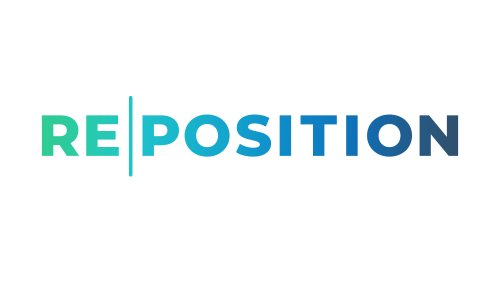Introduction to Google Ads and AI
Google Ads and AI have become the cornerstone of modern online advertising strategies. For decades, advertisers relied on carefully targeted campaigns to appear at the top of Google’s Search Engine Results Pages (SERPs). However, with the rise of generative AI, particularly Google’s AI Overview, the dynamics of online visibility are undergoing a silent revolution. The question on everyone’s mind, is AI Overview replacing traditional paid spots?
The term Google Ads and AI has started trending across digital marketing forums and advertising communities, sparking debates and anxieties alike. At the heart of the debate around Google Ads and AI lies one unsettling possibility: Is Google slowly moving away from ad-based revenue in search Let’s unravel what’s really happening.
What Is Google’s AI Overview?
The AI Overview, part of Google’s Search Generative Experience (SGE), is a feature that generates summaries of content from across the web using generative AI models. Instead of clicking on multiple links or paid spots, users now get instant answers, another shift driven by Google Ads and AI innovations, usually at the very top of the page.
For informational queries, this AI snapshot often pushes organic results down the page. But more concerningly for advertisers, in many cases, paid spots are nowhere in sight above the fold. This has led to a fundamental question about visibility, reach, and ultimately, return on investment (ROI).
How Google Ads Work Today
Traditionally, Google Ads appear in one of the top four positions above organic search results. The ad auction system determines which ad appears based on a blend of keyword bids, Quality Score, and expected impact.
Advertisers paid based on CPC (Cost Per Click), and if a user clicked on their ad, the advertiser would be charged. This system used to work well before Google Ads and AI began reshaping how search results are delivered and displayed.
Impact of AI on Search Result Pages

With the integration of AI Overview, the layout of search pages is changing dramatically. Instead of a few sponsored links and organic listings, users now see:
- AI-generated summaries
- Knowledge graphs
- FAQs from third-party content
- Shopping carousels
- Maps, videos, and yes, sometimes ads
The issue is that the AI Overview often dominates the top of the page, reducing the visibility of ads, especially on mobile. Users get answers instantly, without having to scroll.
Are Paid Spots Being Replaced by AI Overview?
Let’s not sugarcoat it, in some cases, yes. Paid ad spots are being visibly displaced by AI content. While Google maintains that paid ads will continue to be shown, current UI tests suggest otherwise.
This isn’t necessarily an intentional erasure of advertising. Instead, it appears to be Google prioritizing user experience, which inadvertently cannibalizes ad impressions. So, are paid spots dead? No. But they’re no longer guaranteed premium visibility.
Differences Between Organic, Paid, and AI Results
When you search for something on Google, the results you see are typically a mix of three main types
- Paid ads
- Organic results
- AI-generated Overview
Each serves a different purpose and appears in different parts of the search results page.
Paid Ads (Google Ads)
These are the sponsored listings that advertisers pay Google to display. Traditionally, they appear right at the top of the search page, above everything else. You’ll usually see a small “Sponsored” or “Ad” label next to them. These ads are targeted based on keywords, bidding strategies, and audience data.
However, with Google’s AI Overview becoming more prominent, these paid ads are starting to get pushed lower down the page, especially on mobile devices. That means they’re still there, but not always the first thing users see.
Organic Results (SEO-Based Content)
Organic results are the traditional “free” listings that appear because they are relevant to your search, not because someone paid for them. Website owners use SEO (Search Engine Optimization) techniques to make sure their content ranks well.
Historically, these results were just below the paid ads. But now, they are often pushed even further down the page because of the space taken up by AI-generated content. So while they remain a crucial source of traffic, their visibility is more limited in AI-dominant search layouts.
AI Overview (AI-Generated Content)
This is the newest element in Google’s search layout. The AI Overview is a summarized answer generated by Google’s AI, based on multiple sources across the web. It’s designed to give you a fast, informative response without needing to click through multiple links.
This AI summary often takes up the top portion of the search page, sometimes even replacing where paid ads or organic listings used to appear. It’s typically shown for complex or broad queries, especially when users are looking for explanations, comparisons, or summaries.
In Simple Terms
- Paid ads are paid placements—you see them because someone paid Google to show them.
- Organic results are earned spots—they appear because Google’s algorithm thinks they’re helpful and relevant.
- AI Overview is Google’s own answer—an AI-generated summary that sits at the top and may reduce visibility for both paid and organic links.
This new blend makes it harder for advertisers to predict when and where their ads will be seen. The AI Overview can pull snippets from organic content, but not from paid ads, creating a visibility gap for advertisers.
Google’s Official Stance on Paid Ads vs AI
Google has clarified that advertising remains a core part of its business model. In multiple public statements and earnings calls, execs have noted that ads will be integrated into AI Overviews over time.
However, critics point out that while Google says one thing, their test environments show something else. Many marketers report seeing fewer impressions, especially for informational keywords.
AI’s Role in Ad Auction Systems
AI doesn’t just generate summaries; it also influences bidding algorithms, targeting, and dynamic ad creatives through systems like Smart Bidding and Performance Max. These tools are designed to increase efficiency, but they also mean less control for advertisers.
In short, AI is deeply integrated into both the frontend (user interface) and backend (auction systems) of Google Ads.
Performance Max and AI Automation
Performance Max is Google’s flagship AI-powered campaign format. It uses machine learning to serve ads across all of Google’s properties, Search, YouTube, Discover, Maps, and more, without needing advertisers to select placements.
Sounds great in theory, but in practice, it makes data interpretation and attribution harder. Especially now, with the front-facing AI Overview absorbing so much user attention.
Challenges for Advertisers
Here’s what marketers are concerned about:
- Decline in CTR
- Lower impression share
- Increased CPC due to competition
- Uncertainty about ad placements
- Less control over where and how ads appear
When your ads are visually overshadowed by AI content, your brand voice may be silenced, even when you pay for premium placement.
Benefits of AI for Google Ads Users
Despite the gloom, AI isn’t all bad for advertisers:
- Better targeting via AI-driven audience insights
- Automated creative testing for better-performing ads
- Enhanced conversion tracking using AI-assisted analytics
So while front-page visibility may dip, the ROI on AI-optimized campaigns can still be high, if you know how to use the tools right.
Evolving CTR (Click-Through Rates)
Early data shows a drop in CTR for paid ads on search pages with active AI Overview panels. Users are less likely to scroll and more likely to engage with AI content if it answers their query fully.
This could lead to a future where Google Ads and AI contribute to zero-click searches dominating user behavior and reshaping ad metrics.
User Intent and AI-Generated Summaries
AI Overview is particularly adept at satisfying informational and transactional intents. If a user types “best running shoes 2025,” the AI Overview might list products, prices, and summaries, without needing users to click.
Transparency and Trust Concerns
Do users know what content is paid and what’s generated? Not always. While paid spots are labeled, AI Overview content blends sources invisibly. This could erode trust over time, especially if sponsored content is ever included in AI results.
Advertiser Adaptation Strategies
Here’s how to survive the AI tide:
- Focus on branded keywords where AI summaries are less likely
- Invest in Performance Max campaigns
- Enhance landing page UX to boost conversions when clicks happen
- Use long-tail and intent-rich keywords
What AI Overviews Mean for SEO
SEO is becoming more competitive. Content must be:
- Rich in authority
- Easy for AI to parse
- Structurally optimized (FAQs, headings, schema)
AI Overview tends to pull content from well-structured sources, so SEO isn’t dead, it’s just evolving.
Do AI Summaries Lead to Fewer Clicks?
Yes. Zero-click searches are increasing. And advertisers may see a decline in top-of-funnel engagement as AI satisfies the user earlier in the journey.
Is AI Hurting or Helping Ads?
It’s a mixed bag. AI Overview is reshaping the visual hierarchy of SERPs. Ads aren’t gone, but they are less visible. Advertisers must evolve quickly, adapting their strategies to the new era of Google Ads and AI that’s reshaping the search landscape.
FAQs
- Is Google removing paid ads from search pages?
Not exactly. Paid ads still exist, but their visibility is shrinking on pages with AI Overview. - Can advertisers appear inside AI Overview content?
Currently, no, AI Overviews do not pull from paid ads. - Are clicks decreasing because of AI?
Yes. Early data shows click-through rates dropping as users interact more with AI summaries. - How can advertisers adapt to AI in search?
Use AI-driven tools like Performance Max, focus on branded search, and invest in high-conversion landing pages. - Will Google still prioritize ad revenue?
Yes. Google has stated that ads remain a core business, though the layout may shift. - Is SEO still important if AI is summarizing content?
Absolutely. Well-structured, authoritative SEO content is often what powers AI Overview summaries.

 SEO Services
SEO Services  Request a Quote
Request a Quote
 London
London
